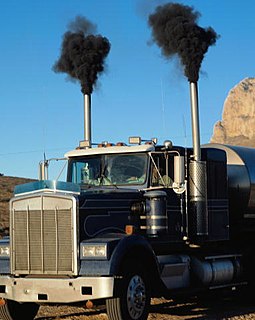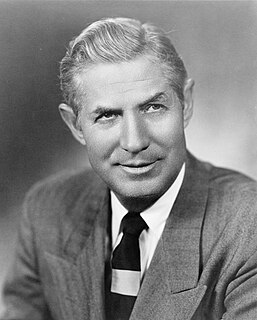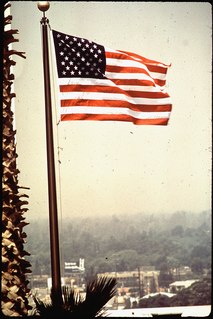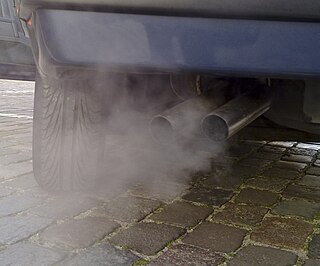| Name | Light duty gasoline | Emissions testing | Light-duty diesel | Emissions testing | Heavy-duty diesel | Emissions testing | Special notes |
|---|
| Alabama [25] | | No emissions testing required | | No emissions testing required | | | Alabama maintains "volunteer emission testing" |
| Alaska [26] | ≥6 model years old (Anchorage) | Biennially | | Exempt | | Exempt |
| Arizona [27] [28] | Model Years ≥1967 but more than 5 model years old (Pima County/ Maricopa County) | Biennially | 1967–2007 (Pima County/ Maricopa County) | Pima County: 30 percent opacity
Maricopa County: 20 percent opacity
| Maricopa County | J1667 test protocol
Model year <1991: 55 percent opacity
Model year ≥1991: 40 percent opacity
| Only state which still conduct emission testing dating back to the 1967 model year unlike other states using EPA classification (a few still conduct test for 1968–present (1968+ testing is for jurisdictions using defined EPA standards for vehicle classification since the '68 model year and beyond automobiles must have an exhaust emission system - PCV system, air injection pump, controlled spark module) e.g. the absence of a rolling chassis exemption - in some states when an automobile reaches an age limit (as in 25 model years old) the vehicle is exempted or pertaining to motor vehicle laws e.g. classic automobile registration and displaying vintage license plates |
| Arkansas | | | | | | | |
| California | vehicles 1976 and newer model-year gas-powered, hybrid, and flex-fuel vehicles; exemptions: new car = ≤6 model-years old are exempt; change of ownership = ≤4 model-years old are exempt | required biennially for registration renewal; 2000 model-year and newer receive only visual and OBDII inspections | vehicles 1998 and newer model-year diesel-powered vehicles with a GVWR ≤14,000 pounds; exemptions: none applicable to diesel-powered vehicles | required biennially for registration renewal; 1998 model-year and newer receive only visual and OBDII inspections | California-based fleets of 2 or more heavy-duty vehicles with a GVWR >14,000 pounds | Periodic Smoke Inspection Program (PSIP) an annual smoke and tamper self-inspection; exemptions: new vehicle = ≤4 model-years old are exempt | Prior to 2004 emission testing included 1966 and newer model year automobiles - 1984 calendar year phased in the use of an acceleration simulated mode test criteria - a 1998 state law made pre-1973 automobiles exempt from emission testing where it temporarily included a 30-year rolling chassis exemption which was repealed in 2006 where 1976 and newer are subjected to state mandated emission testing - California visual inspection strictest in the USA (also similar to Japanese 'Shaken' vehicle laws which is their equivalent of vehicle inspection) which serves as a model for other states implementing I/M (inspection/maintenance) programs |
| Colorado [29] | Vehicles older than 4 years required, this will change to 7 years in 2015. Specially registered cars made before 1975 and special vehicles may be exempted. | Biennially when required | Exempt for first seven model years of gasoline vehicles. | When outside exemption, vehicles up to 32 years old - biennially, else annually. OBD testing done when newer than 10 years | Exempt for first four model years of diesel vehicles. | When outside exemption, diesel trucks less than 10 years - Biennially else annually. | Only on high population corridor encompassing Castle Rock to Wellington, including Boulder and Greeley. Required for vehicles used in this area. Dynamometer testing used. |
| Connecticut [30] | more than 4 model years old but less than 25 model years old | Biennially (OBDII) | more than 4 model years old but less than 25 model years old | Biennially | | Exempt | |
| Delaware [31] | Over 5 model years old | Biennially (OBDII) | | | | | |
| Florida | | | | | | | |
| Georgia | | Annually (Atlanta metro area only) | | | | | |
| Hawaii | | | | | | | |
| Idaho | | | | | | | |
| Illinois | | Biennially, after the vehicle is four years old | | | | | Required only in the Chicago metropolitan area and eastern suburbs of St. Louis, Missouri |
| Indiana | | | | | | | |
| Iowa | | | | | | | |
| Kansas | | | | | | | |
| Kentucky | | | | | | | |
| Louisiana | | | | | | | |
| Maine | | | | | | | |
| Maryland | | Biennially | | | | | Hybrid vehicles that achieve an EPA gas mileage rating of at least 50 miles per gallon are exempt from testing for 3 years after their model year, after which they are then tested at the standard two year intervals. |
| Massachusetts [32] [33] | Every year | OBDII | Every year | OBDII | 8,501 to 14,000 lbs (Medium duty)
14,000 lbs+ (Heavy duty)
| Medium Duty: OBDII
Heavy duty: J1667 Protocol
| |
| Michigan | | | | | | | |
| Minnesota | | | | | | | |
| Mississippi | | | | | | | |
| Missouri | | | | | | | |
| Montana | | | | | | | |
| Nebraska | | | | | | | |
| Nevada | Model years 1968 and newer | | | | | | |
| New Hampshire | | | | | | | |
| New Jersey | Model years ≥ 1995 Must be inspected biennially. Model years ≤ 1995 do not require inspection. | | | | | | |
| New Mexico [34] [35] | Model Years ≥1978 but more than 4 model years old (Bernalillo County) | Biennially and at change of ownership | Model Years ≥1978 but more than 4 model years old (Bernalillo County) | Biennially and at change of ownership | | Exempt | |
| New York | | | | | | | |
| North Carolina | | | | | | | |
| North Dakota | | | | | | | |
| Ohio | More than 4 model years old but less than 25 model years old in the Greater Cleveland area [36] | Biennially (OBDII) | More than 4 model years old but less than 25 model years old in the Greater Cleveland area | Biennially (OBDII) | | | Testing was also required in the Cincinnati and Dayton Metropolitan areas from 1995-2005 |
| Oklahoma | | | | | | | |
| Oregon [37] [38] | Vehicles must be tested every other year for registration renewal in the Portland and Medford areas. Model Years ≥1975 must be tested in Portland area, and those 20 model year and newer in Medford area. Also all vehicles new to Oregon. | Biennially | Same intervals and exemptions as gasoline cars, 8,500 lbs or less | Biennially | ≥8,501 lbs | Exempt | |
| Pennsylvania | | | | | | | |
| Rhode Island [39] [40] [41] | more than 2 models years old (inclusive) or 24,000 miles (inclusive) | Biennially (OBDII) | | Exempt | | Exempt | Effective July 2012, any state contracted job requiring heavy duty vehicles must be operated with pollution control devices |
| South Carolina | | | | | | | |
| South Dakota | | | | | | | |
| Tennessee [42] | Any gasoline vehicle with a model year of 1975 and newer and a GVWR of 10,500 lbs or less. Motorcycles are exempt. | Annual testing. OBDII + catalytic converter tamper check + fuel cap leak test for 1996 or later vehicles. Tailpipe/tampering testing for 1995 and older vehicles. | Any diesel vehicle with a model year of 1975 and newer and a GVWR of 10,500 lbs or less. | Annual testing. OBDII + catalytic converter tamper check + fuel cap leak test for 2002 or later vehicles. Curb Idle-opacity/tampering testing for 2001 and older vehicles. | | Exempt | Only applies to Hamilton (Chattanooga), Davidson, Rutherford, Sumner, Williamson, and Wilson (all part of Greater Nashville area) Counties. Required for registration renewal. Davidson county runs their own emissions programs/facilities with the assistance of the state. Shelby County (Memphis) formerly required testing, but ended their program in July 2013 due to funding issues and no state support. [43] |
| Texas | more than 2 model years old to 24 model years old; motorcycles, diesel-powered, and automobiles 25 model years or older exempt from emission testing - includes motor vehicles registered as an Antique or Classic under Texas law (either displaying state-mandated vanity license plate or vintage-era license plates (this also includes past general issue plates from 1975–present with validation stickers used prior to the 1995–present windshield sticker; license plate law in Texas (effective since May 1988) requires new general issue plates after it reaches 8 years of age - license plate law was amended 11.1.16 where TxDMV no longer mandates plate replacement every 8 years with the exception that the license plate is considered legible e.g. loss of reflectivity with the paint base and/or if a license plate is unreadable if a police officer does a probable cause traffic stop) | annually (both OBDII for 1996–present and ASM to 1995 for motor vehicles registered in the DFW Metroplex and Houston Metro area except for 4-wheel drive/all wheel drive powertrains (4WD/AWD including vehicles over 8500 GVW are subjected to the two-speed idle (TSI) testing; TSI testing to 1995 only in El Paso, Travis, and Williamson Counties) | | | | | Emission testing mandated for motor vehicles registered in the Houston Metropolitan area (Brazoria, Fort Bend, Galveston, Harris, Montgomery), DFW Metroplex (Collin, Dallas, Denton, Ellis, Johnson, Kaufman, Parker, Rockwall, Tarrant), Austin Metropolitan area (Travis, Williamson) and El Paso counties; since March 1, 2015 inspection stickers no longer issued where an automobile must pass the safety or emission test prior to renewing automobile registration |
| Utah | | | | | | | |
| Virginia [44] | more than 2 model years old to 24 model years old | Biennially. First-time registrations exempt if vehicle has received an emissions certificate from certain states within previous 12 months. | newer than 1996 model year | Biennially | GVWR > 8500 lbs. exempt | | Emission testing mandated for motor vehicles registered in the counties of Arlington, Fairfax, Loudoun, Prince William, or Stafford, and the cities of Alexandria, Fairfax, Falls Church, Manassas or Manassas Park. Certain hybrids exempt. |
| Washington [45] [46] [47] [48] | Vehicles tested every other year depending on model year. Vehicles model year 2009 and newer and those >25 model years old are exempt from testing. (Clark, King, Pierce, Snohomish and Spokane counties). | Biennially. Exempt after 25 years. | All diesel passenger vehicles are exempt if weight is under 6,000 lbs. | | Vehicles > 6,000 lbs and older than 2007 require testing. 2007 and newer exempt regardless of weight. | Biennially. Odd model years on odd test years, even model years on even test years. Exempt after 25 years. | Emission testing required for most of Clark, King, Pierce, Snohomish and Spokane counties. Vehicles exempt from testing are Motorcycles, 2009 and newer model vehicles, Hybrids that attain greater than 50 miles per gallon city, all diesel passenger vehicles under 6,001 lbs GVWR, all diesel vehicles model year 2007 and newer regardless of weight. |
| West Virginia | | No emissions testing required | | No emissions testing required | | | |
| Wisconsin [49] | Testing required for vehicles model years 1996 and later in Kenosha, Milwaukee, Ozaukee, Racine, Sheboygan, Washington and Waukesha counties (model years 1996 to 2006 up to 8,500 pounds; model years 2007 or newer up to 14,000 pounds) () | Every other year before registration renewal; after transfer of ownership; after registration in Wisconsin | Testing required for vehicles model years 1996 and later in Kenosha, Milwaukee, Ozaukee, Racine, Sheboygan, Washington and Waukesha counties: Model years 2007 and newer which have a gross vehicle rating up to 14,000 pounds | Every other year before registration renewal; after transfer of ownership; after registration in Wisconsin | Greater than 14,000 lbs. | Exempt | |
| Wyoming | | | | | | | |









